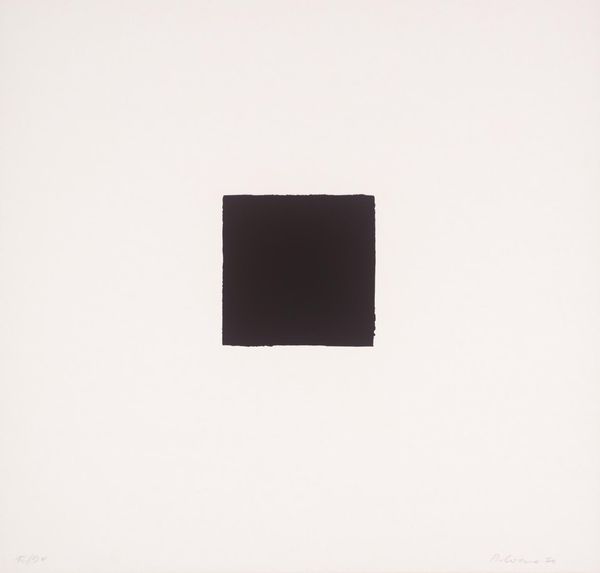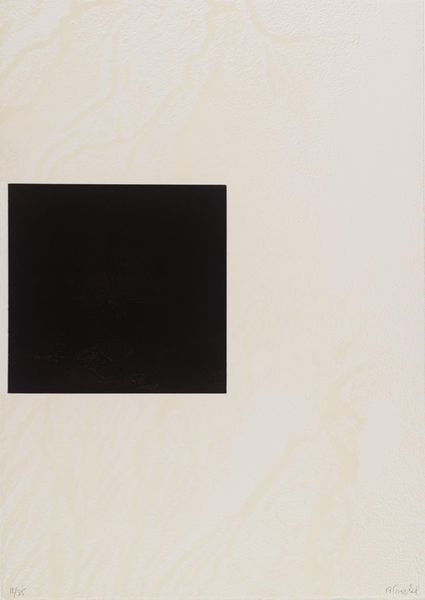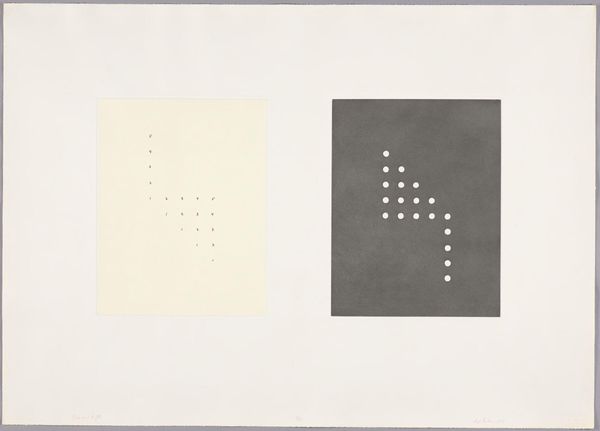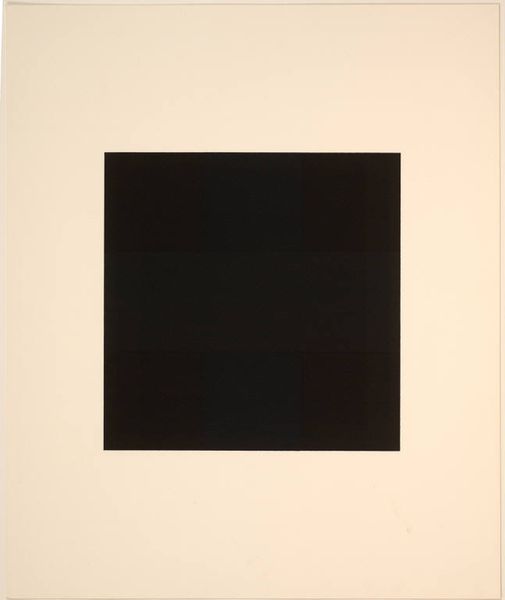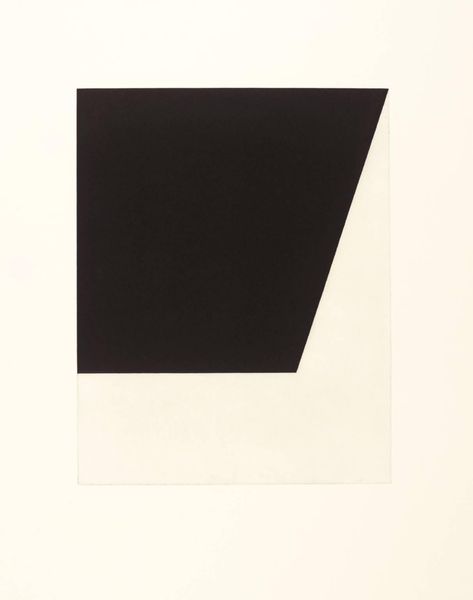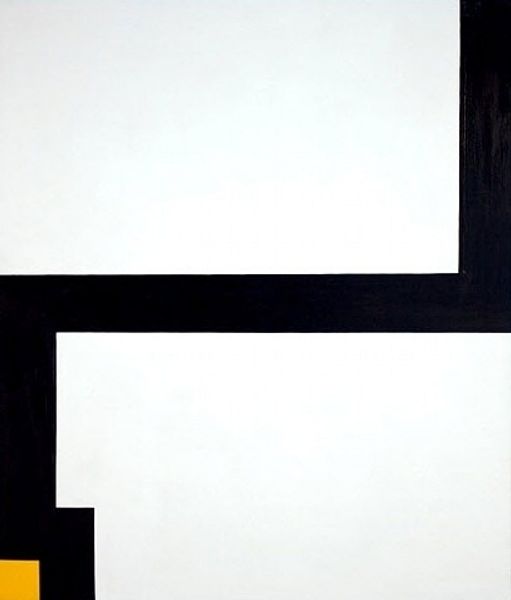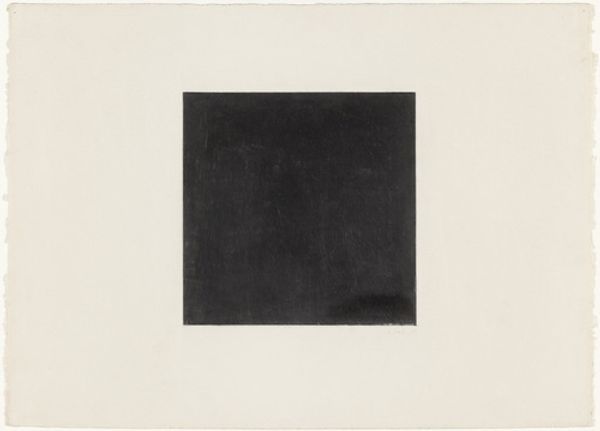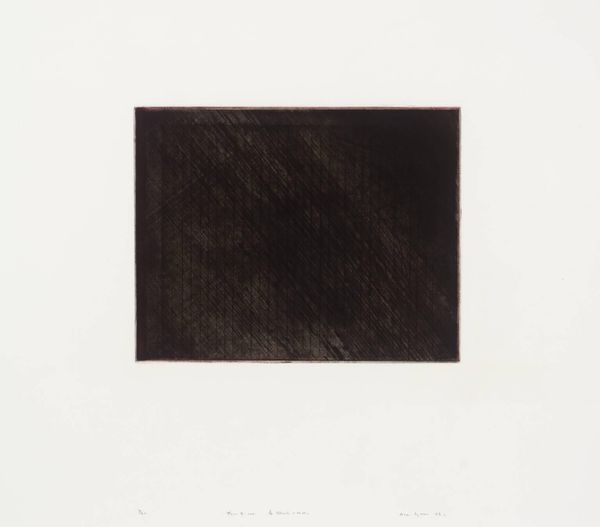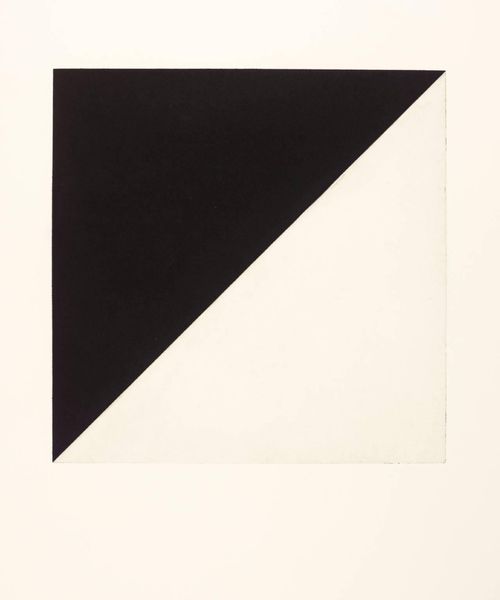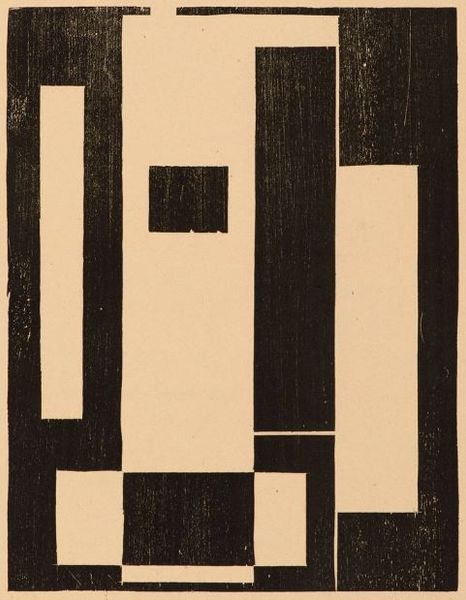
painting, acrylic-paint
#
abstract expressionism
#
non-objective-art
#
painting
#
minimalism
#
op art
#
colour-field-painting
#
acrylic-paint
#
form
#
geometric
#
abstract-art
#
abstract art
#
modernism
#
hard-edge-painting
Dimensions: overall: 64.77 × 94.62 cm (25 1/2 × 37 1/4 in.) framed: 66.68 × 96.52 cm (26 1/4 × 38 in.)
Copyright: National Gallery of Art: CC0 1.0
Curator: Here we have Frederick Hammersley's "One, #8" from 1961. Hammersley created this painting using acrylic on canvas. What strikes you when you first view this composition? Editor: Initially, I’m drawn to the stark contrast. The tension created by those two seemingly identical black squares against the expansive pale ground, it’s quite striking. The precision is immaculate. Curator: Precision indeed. One might read these as symbolic of binary oppositions, a sort of stark duality reminiscent of yin and yang or even, delving into Jungian psychology, as representations of the conscious and unconscious mind. What do you make of the almost aggressive simplicity? Editor: I think that’s reductive. Formally, their squareness asserts an almost brutal facticity. We have these discrete planar masses pushing against a flat field. The literal objectness rejects symbolic interpretations entirely, wouldn't you agree? There’s no hierarchy or narrative to glean here. Curator: But consider the historical context! Emerging during the height of Abstract Expressionism and concurrent with early Minimalism, these precise shapes served as a powerful rejection of emotional excess. Their simplicity isn’t vacant; it embodies an intellectual reaction against gestural abstraction. One can feel a shift in consciousness happening. Editor: Agreed, to an extent. Yet, even within that framework, the dialogue focuses on form. The “all-over” composition minimizes any focal point. Meaning doesn't necessarily flow from historical angst; instead, the material qualities dominate perception. How the paint lies, how the geometric order structures our vision—that's where the power resides, in my view. Curator: I appreciate your perspective. Viewing it through the lens of material presence provides a refreshing point of access. And this interaction— between symbolic reading and material assessment – demonstrates the generative power of Hammersley's "One, #8". Editor: Absolutely, something about this reductive composition seems to promote a rich range of responses, demonstrating that simplicity is not the same as simplemindedness.
Comments
No comments
Be the first to comment and join the conversation on the ultimate creative platform.
